Resurrecting ‘The Elizabethan’ by Bachmann
As Autumn approaches it is time to put the garden to bed and to come inside and play trains.
I am revisiting the north east of England in the early 1960s and I have resurrected my Bachmann Elizabethan train set. The splendid wooden box contains a model of 60017 Silver Fox with late crest and six maroon Thompson coaches. For use on my layout I had already added some extra lead ballast to the engine as detailed here in an earlier Post.
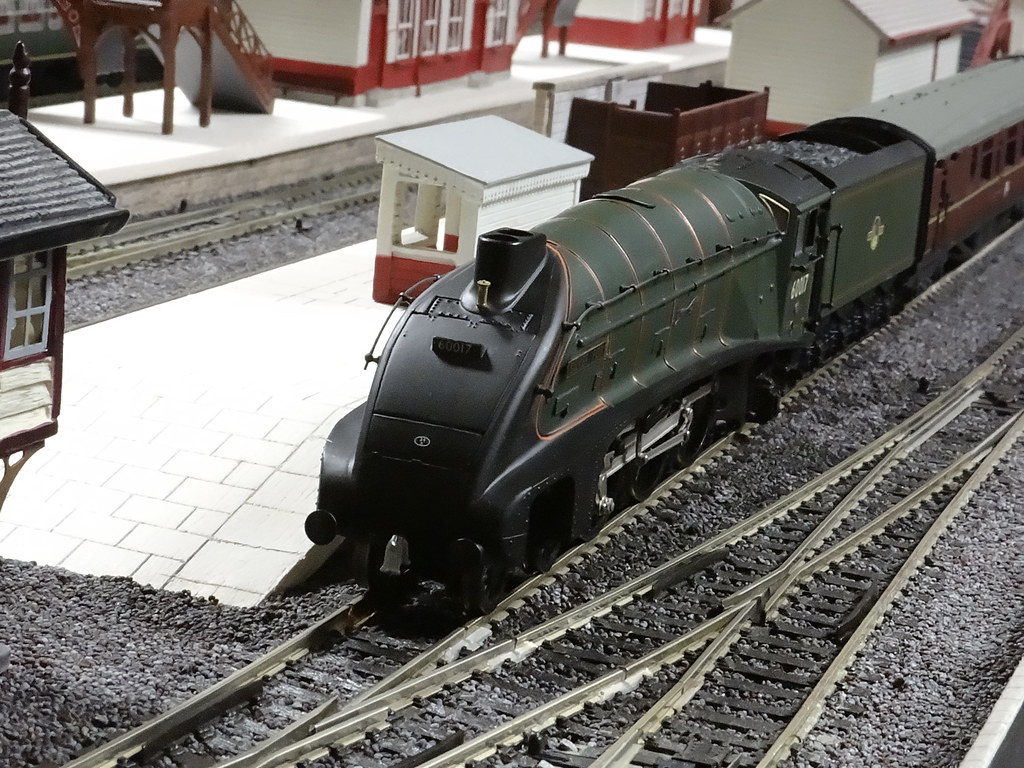
A4 60017 Silver Fox heading the Elizabethan
Firstly a little bit of history. Bachmann marketed ‘The Elizabethan’ to mark the fifth anniversary of Bachmann Branchline. I calculate that the set dates from 1995.

Bachmann Elizabethan 31-1995
In 1970 the model train manufacturer Trix had produced an 'OO' scale model A4. In 1974 it was re-branded as a Liliput model. Kader, Bachmann's parent company, bought Liliput in 1993 and according to the entry on Wikipedia modified the Liliput A4 to produce their Bachmann model. Around 2010 Bachmann upgraded their mechanism to make the model more digital friendly but the bodywork remained essentially unchanged from their first model.
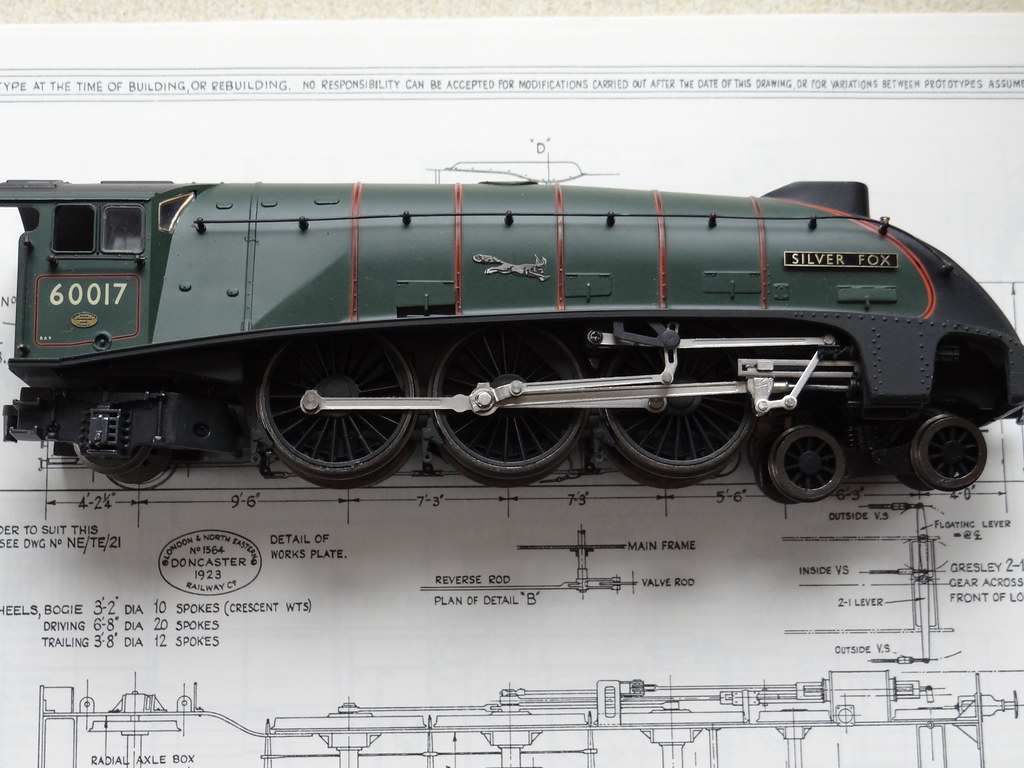
A4 Silver Fox on top of Roche A3 drawing
In the 1960s Trix models were built to a scale of around 3.7mm to the foot and their Mk1 coaches from that time are distinctly ‘short’. However the A4 was marketed as ‘00’ scale. The Railway Modeller for July 1988 has 4mm scale drawings for Mallard. Unfortunately I don’t have a copy of this issue and instead I have overlaid my Bachmann A4, Silver Fox, onto Mr Roche’s drawing of an A3. The wheel spacing is spot on, as are the overall length of the engine and the width of the cab. I would say that the Bachmann A4 is constructed to a scale of 4mm to the foot.
Back to the train set and A4 Silver Fox is supplied with a set of etched name plates, works plates and ‘Fox’ emblems for the purchaser to apply. I have an old faded British Transport colour slide of the prototype to show how the plates should be positioned.
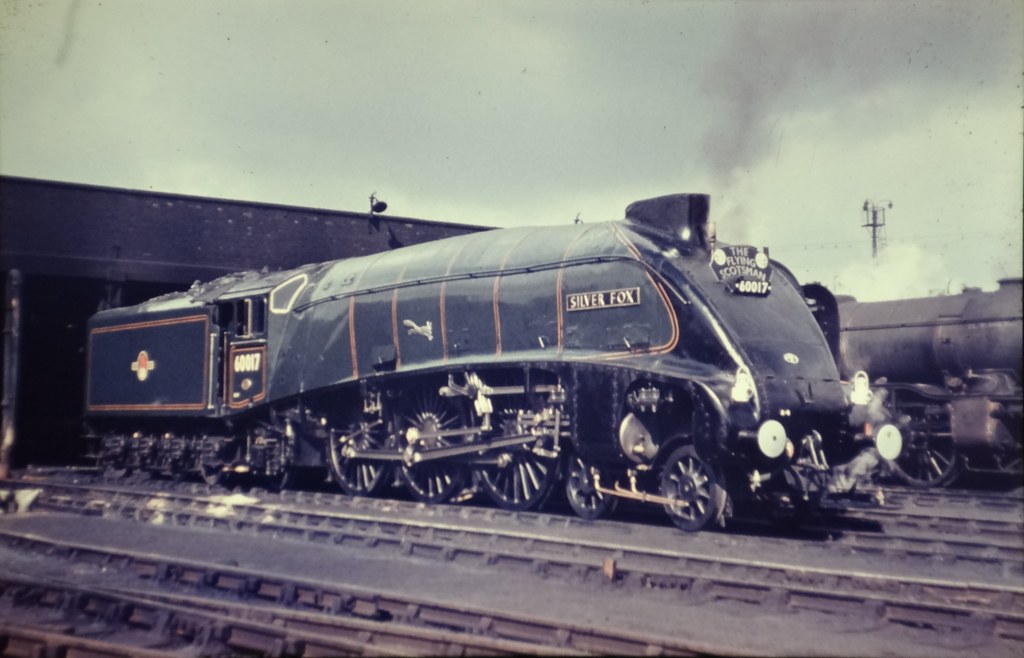
1960s Kings Cross BR A4 60017 Silver Fox
I chose to replace the Bachmann plates with new plates from Fox Transfers. Interestingly when the empty Fox fret is placed over the Bachmann name plates there is a difference of some 6mm (18 scale inches), the Fox plates being the longer! (I wonder if either is correct?)

Empty Fox fret over Bachmann plates
How to position the plates?
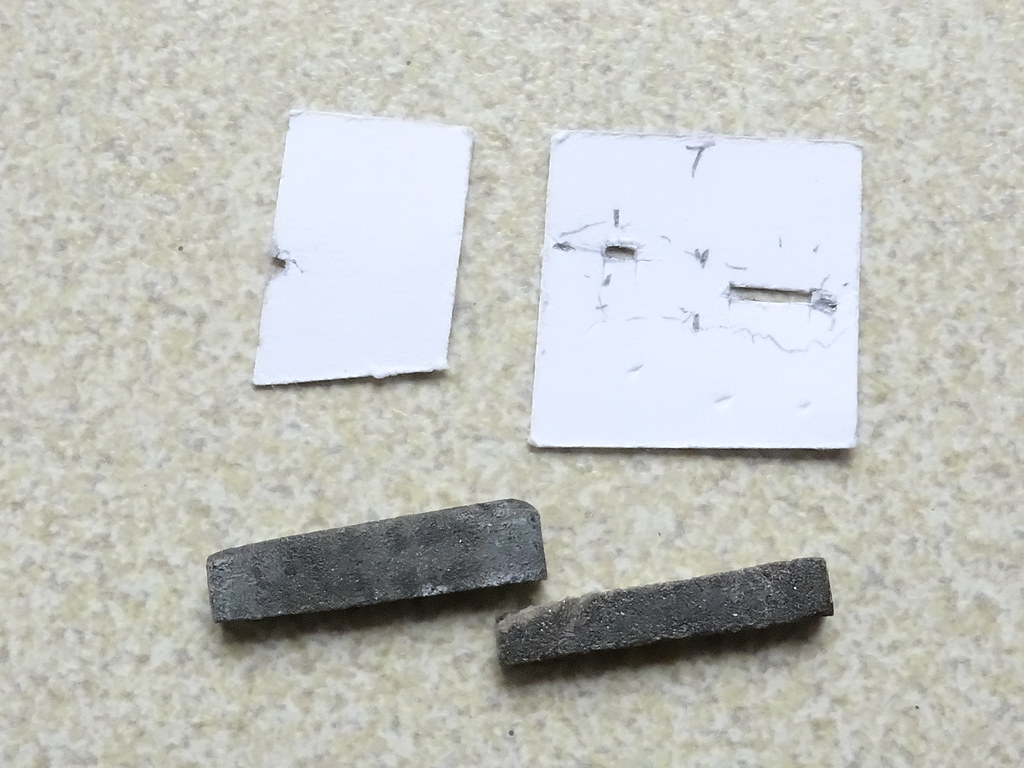
Cardboard templates and bits of emery board
I made a couple of card templates for the works plates and the ‘Foxes’ which I could position on the sides of the body relative to handrails / boiler bands etc. I cut the templates with openings / indents to highlight where I should put pencil marks on the body which in turn could be used to position spots of adhesive – Humbrol satin varnish. The Bachmann body is constructed with two black blank name plates. These blank plates are far too thick. For my model of Seagull I was able to prise the plates off the body. However the plastic on Silver Fox was stuck fast and I was left with no choice but to reduce the plate thickness in situ. Luckily the plastic is soft and I was able to make some files using snippets from one of my wife’s emery boards (nail files).
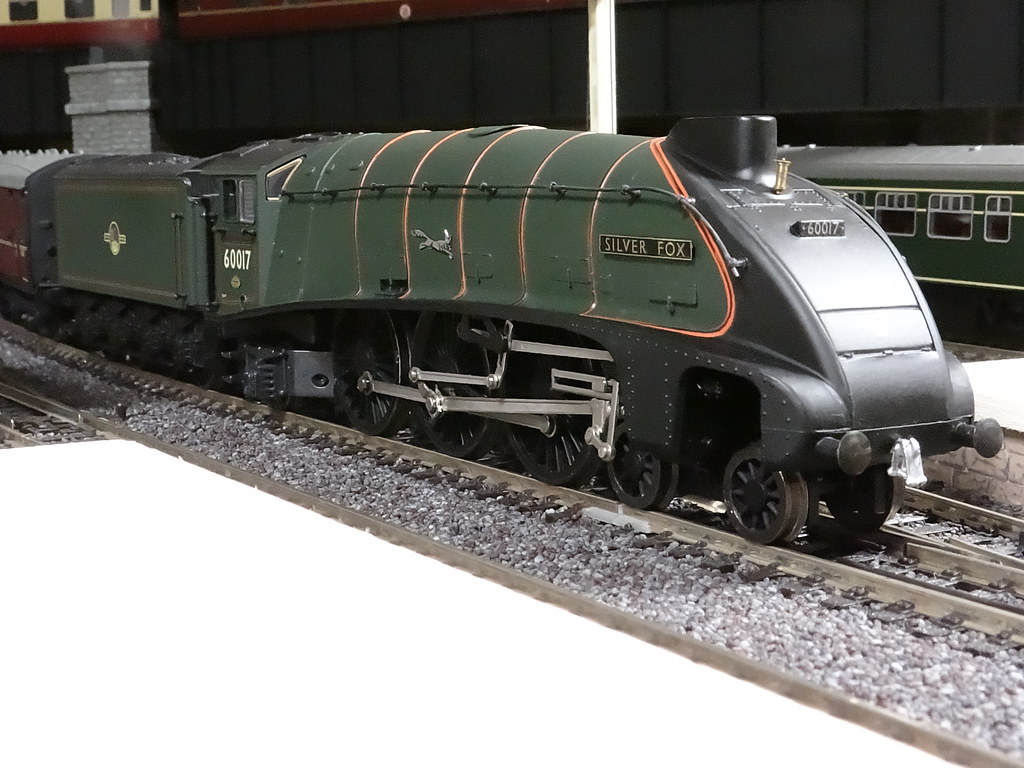
Bachmann Silver Fox with etched plates from Fox Transfers
What about the coaches?
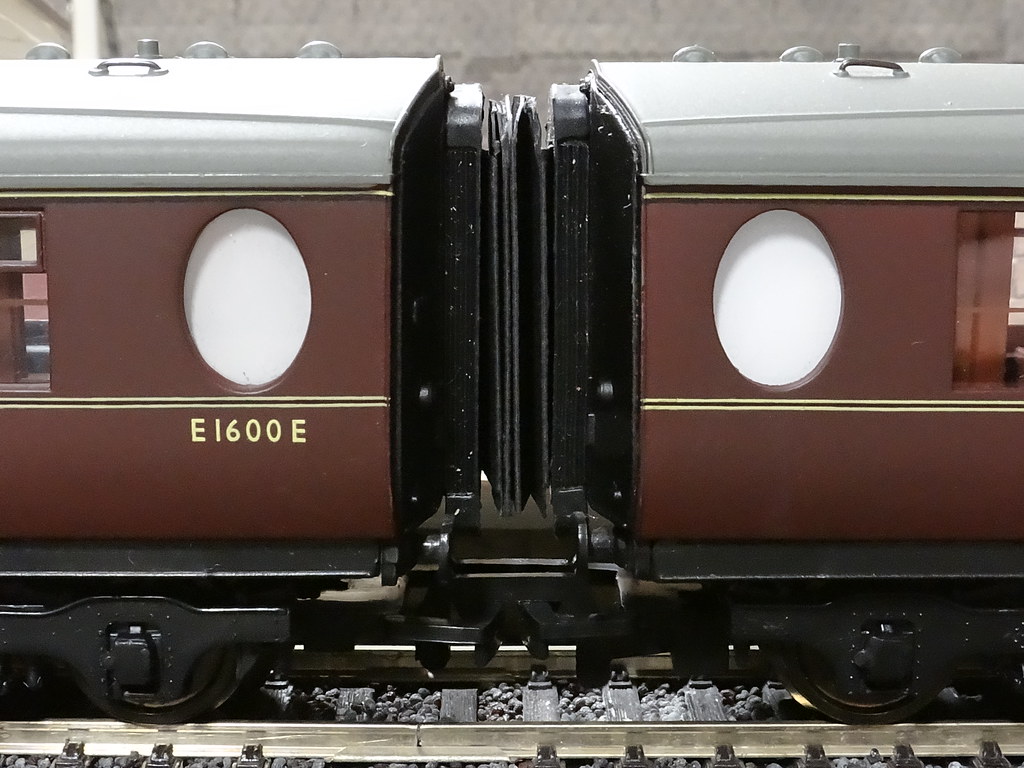
Thompson to Thompson coaches from the Elizabethan by Bachmann
Back in 1995 Bachmann had still to introduce their Mk1 coaches and the Elizabethan train set was instead put together with Bachmann’s early Thompson coaches. These early coaches are not flush glazed and suffer from a number of geometric inaccuracies. However when run as a set and viewed from a distance I think they are still passable. In my opinion they look even better when the gaps between adjacent coaches are blocked up with corridor connectors.

Card connector
I used my tried and tested technique where each connector was cut from a rectangle 100mm by 32mm of black card (Daler – Rowney A4 Canford 150g/m Jet Black card). The centre panel was 16mm wide. The concertina sections on either side were made up of three sections, 16mm, 14mm and 12mm wide. In order to fit inside the dummy Bachmann corridor connector the 14 and 12mm sections were reduced in height by 4mm at the top and 2mm at the bottom. Marking out takes the most time and it makes sense to go for ‘batch production’.
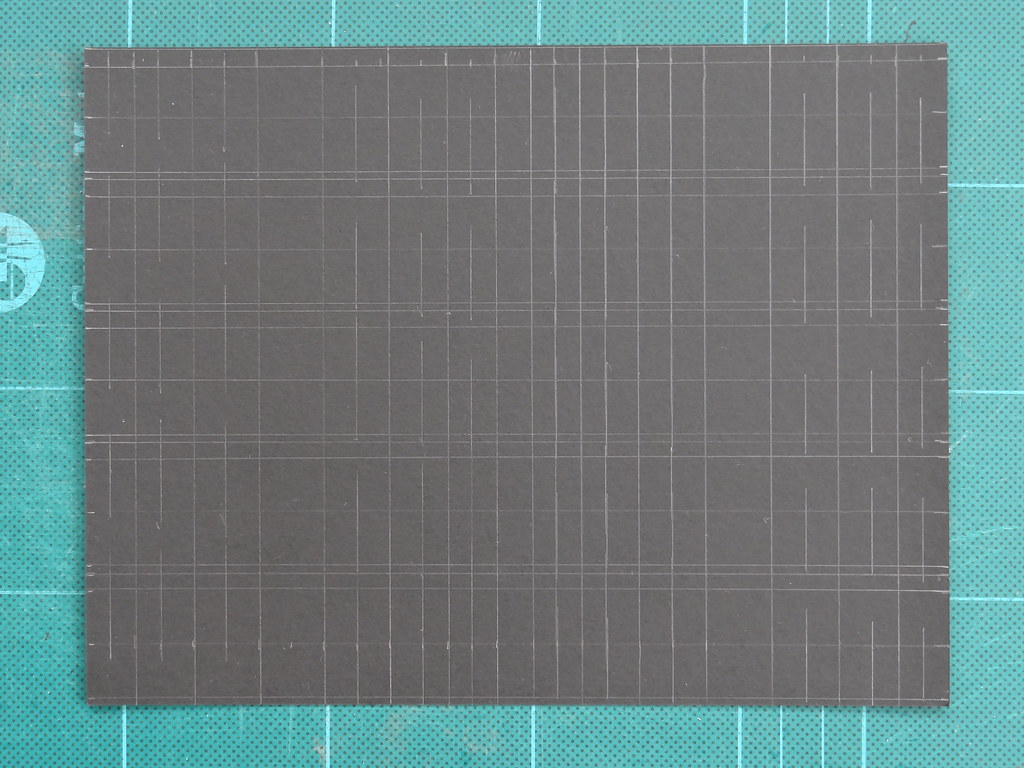
Ten off
The Elizabethan was non-stop Kings X Edinburgh Waverly and to enable a change of driver and fireman the tender was also equipped with a corridor connector.

Train to tender corridor connector
The tender connector was made to the same geometry as for the Thompson coaches but it required a tiny piece of double sided tape to hold it in position on the tender.
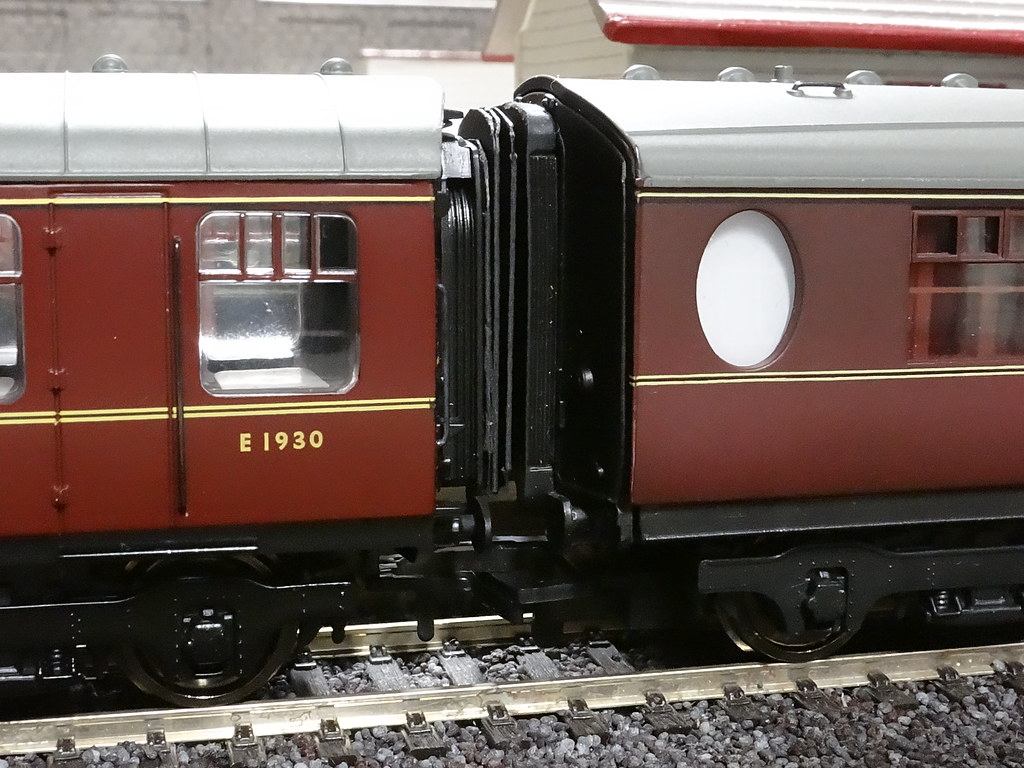
Thompson to BR Mk1 RU
I have introduced a BR Mk1 Restaurant Car into the rake of coaches. This was fitted with separate corridor connectors as described here in a previous Post.
How does it all work? Well there is a video here on YouTube. I have to say I am rather pleased.
-
 5
5
-
 2
2


.thumb.jpg.60c53fcbcaa34017b05b8919d1a9e6d2.jpg)


11 Comments
Recommended Comments
Create an account or sign in to comment
You need to be a member in order to leave a comment
Create an account
Sign up for a new account in our community. It's easy!
Register a new accountSign in
Already have an account? Sign in here.
Sign In Now